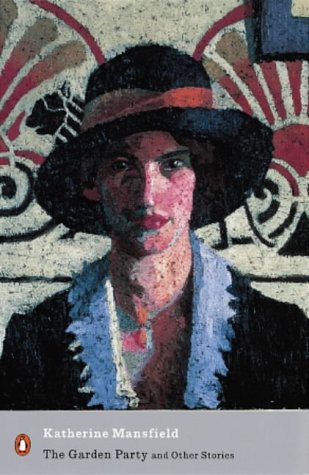
Anno di prima pubblicazione: 2005
Genere: raccolta di racconti
Paese: Italia
Editori Laterza (€ 9,50)
La recensione di questo libro si trova nella rivista culturale on-line Paper Street a questo link.
Genere: raccolta di racconti
Paese: Italia
Editori Laterza (€ 9,50)
La recensione di questo libro si trova nella rivista culturale on-line Paper Street a questo link.
Nell'articolo pubblicato su Paper Street non ho potuto parlare molto delle autrici per motivi di spazio, ma forse le conoscerete già un po' perché tutte e quattro scrivono per la popolare rubrica "Italieni" che esce settimanalmente su Internazionale.
Gabriella Kuruvilla è nata nel 1969 a Milano da padre indiano e madre italiana. Si è laureata in architettura ed ha collaborato con numerose riviste. Ora si dedica a tempo pieno alla scrittura e alla pittura. Nel 2001 ha pubblicato con lo pseudonimo di Viola Chandra il libro Media Chiara e Noccioline. Nel 2008 ha pubblicato la raccolta di racconti E’ la vita, dolcezza. I suoi quadri sono stati esposti sia in Italia che all’estero. Leggi un suo racconto a questo link e visita il suo sito personale per vedere i suoi quadri e leggere degli estratti.
Igiaba Scego è nata nel 1974 a Roma da genitori somali espatriati nel 1969 dopo il golpe di Siad Barre e fino alla prima media andava ogni estate a Mogadiscio. Dopo essersi laureata in lingue straniere alla Sapienza, ha fatto un dottorato di ricerca in pedagogia. Scrive per numerosi quotidiani e riviste, tra cui L’Unità (qui la sua rubrica) e Nigrizia. Ha scritto i romanzi La Nomade che Amava Alfred Hitchcock (2003), Rhoda (2004) e Oltre Babilonia (2008). Inoltre, ha curato Quando Nasci è una Roulette insieme a Ingy Mubiayi e la raccolta di racconti Italiani per Vocazione (2005). Un suo racconto è anche presente in Amori Bicolori (2008). Recentemente ha curato un programma su Radio3 intitolato “Black Italians”. Leggi un suo racconto a questo link.
Ingy Mubiayi Kakese è nata nel 1972 al Cairo da padre zairese e madre egiziana. E’ arrivata in Italia nel 1977 e si è stabilita a Roma con la famiglia. Ha frequentato prima le scuole francesi e poi quelle italiane. Ha iniziato a scrivere folgorata da scrittori francesi come Sartre e Camus, ma anche da Italo Calvino. I suoi racconti sono stati pubblicati in varie raccolte, tra cui Amori Bicolori (2008) e Italiani per Vocazione (2005).
Laila Wadia è nata a Bombay nel 1966, da genitori indiani seguaci di Zarathustra. E’ arrivata in Italia da adulta e si è stabilita subito a Trieste, dove lavora come collaboratrice esperta di lingua inglese all’università di Trieste. Ha scritto una raccolta di racconti, Il burattinaio e altre storie extra-italiane (2004), e il romanzo Amiche per la Pelle (2007).
Io, a parte quest'antologia e Amori Bicolori, ho letto anche tre romanzi bellissimi che intrecciano l'Italia e il corno d'Africa nella loro narrazione. Ho deciso di parlarvene un po'. Il primo è scritto da una delle quattro autrici di Pecore Nere, si tratta di Oltre Babilonia di Igiaba Scego (Donzelli, €17,50), di cui per altro avevo già parlato in questo blog. Quando ho iniziato a leggere questo libro ero in partenza per Londra. Guarda caso il mio ostello era a Willesden, il quartiere dove è ambientato White Teeth di Zadie Smith (e dove è anche cresciuta). Nella mia mente non potevo fare a meno di fare il paragone: Igiaba Scego è la nostra Zadie Smith! O lo sarà, se preferite. A parte il colore della pelle, tutte e due riempono le loro storie di personaggi dalle geografie più disparate (ma che immagino siano le persone che conoscono e con cui hanno a che fare tutti i giorni), ci si diverte da matti leggendole, ma non a scapito del contenuto, e infilano nelle loro storie tutto quello che le emoziona e le interessa, dalla musica alla letteratura. Non mancano però momenti amari, come la descrizione della Somalia martoriata dalla guerra o dalla crudeltà dei colonizzatori. Ecco un pezzettino del libro, preso quasi a caso, per darvi un'idea del talento della ragazza:
“La Nus-Nus *
C’è qualcosa nella morte che assomiglia all’amore.
Antologia di Spoon River, pagina 103, versione comprata in edicola, allegata a un giornale. Quale? Mar non se lo ricordava più. Testo a fronte. Mar comprava solo poesie con testo a fronte. Rilesse il verso in inglese There is nothing about death like love itself.
Il ritmo era abisso. Come la canna della pistola dentro la bocca di Patricia.
Le faceva paura. Era seduta in mezzo al niente di Villa Borghese, Mar. Intorno i bambini giocavano, le coppiette si baciavano e i tossici speravano di rimediare la loro dose in vena con qualche borseggio sul bus 490.
La vita scorreva fluida intorno a Mar. Il cielo era terso come in certi telefilm tedeschi. Le nuvole distratte. Gli uccelli esitanti. Niente solcava quel blu finzione. Roma sembrava un set cinematografico. Sembrava uno studio della MGM degli anni d’oro. O forse era solo Cinecittà. A ogni angolo, inaspettati, potevano spuntare Visconti, la Magnani, Alberto Sordi. O perché no, il grande Federico Fellini con una Ekberg e una fontana. Con un Mastroianni e una soubrette.Federico Fellini che gira il suo nuovo film con Mar Ribero Martino. Una ragazza nera. Troppo nera. Con una madre bianca, argentina, italiana, portoghese. Una famiglia di errori la sua. Una famiglia di pazzi."
* La <
Nella prossima puntata, Cristina Ali Farah. :-)



